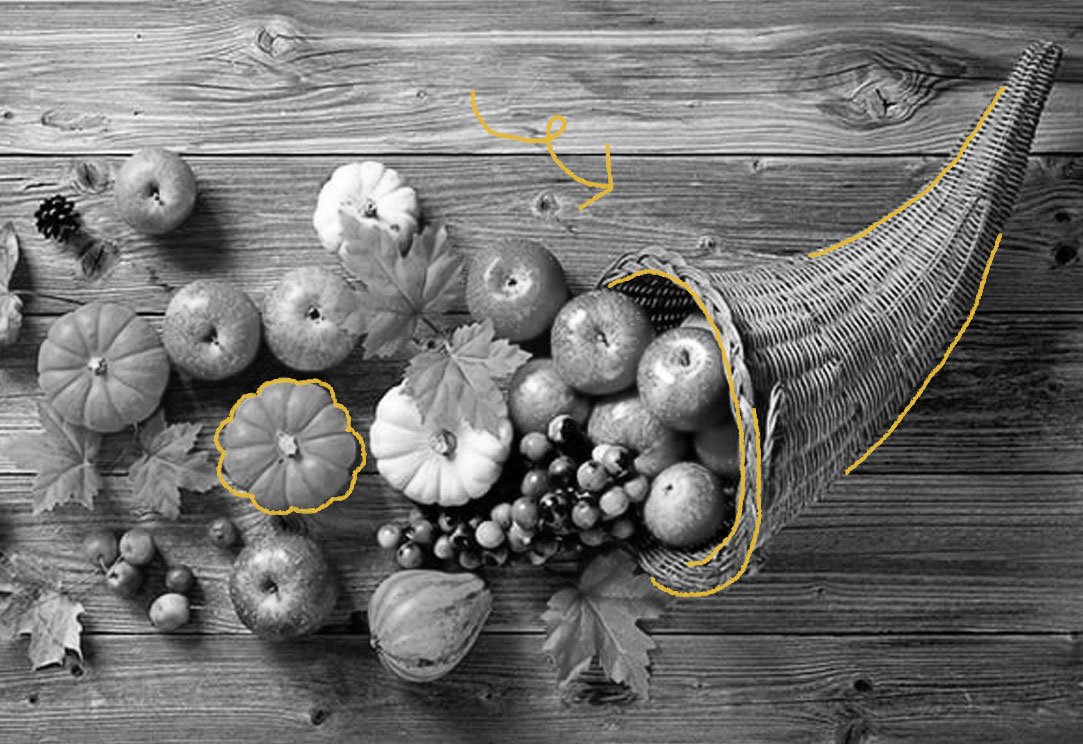The word “cornucopia” comes from the Latin words cornu (“horn”) and copia (“plenty"). The “horn of plenty” got its reputation for symbolizing abundance and prosperity from a Greek myth that while baby Zeus was being cared for and fed by Amalthea, he broke off one of her horns and it began to emit a constant supply of food for him. The cornucopia frequently appears in Greek and Roman depictions of gods and goddesses, especially Hercules, Fortuna, and Demeter. Christians later adopted the pagan symbol. It was often used during European harvest festivals, and there is speculation that it became associated with American Thanksgiving celebrations as an ode to the harvest festivals that the settlers would likely have celebrated in their own homelands. While it is clearly a natural fit for a holiday that began as a celebration of abundance and a bountiful harvest, there is no formal record of exactly how the cornucopia became associated with Thanksgiving. Today, it is often used as a centerpiece on the Thanksgiving table or placed decoratively inside or outside of the home during the holiday season. It is also often used in children’s Thanksgiving-themed crafts and is usually filled with pumpkins and other vegetables that have an autumnal association.

Your go-to guide for weird history facts
Subscribe to the FREE daily email that makes learning about history fun.


